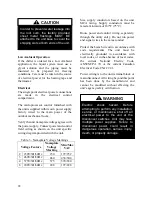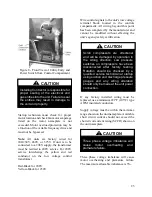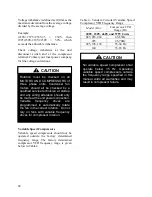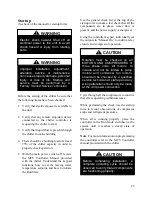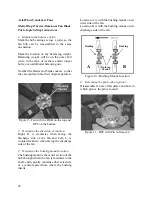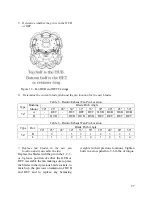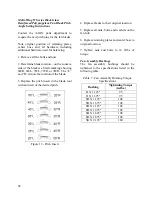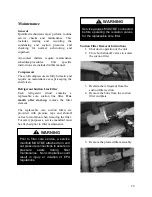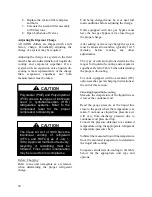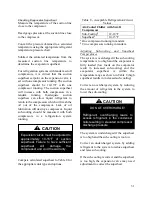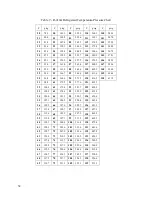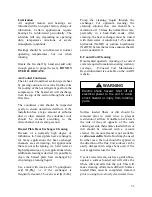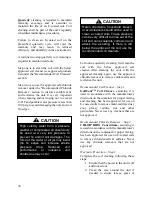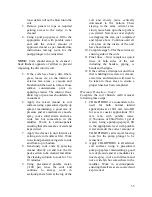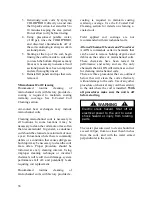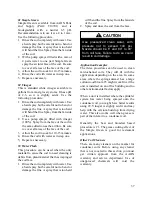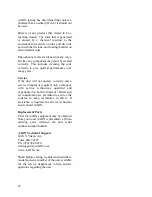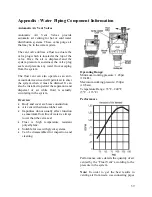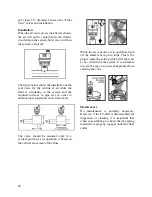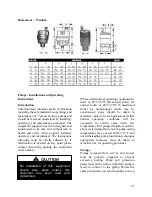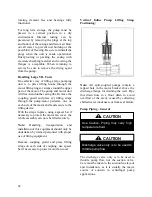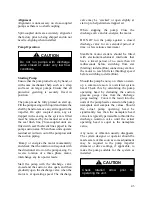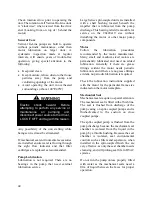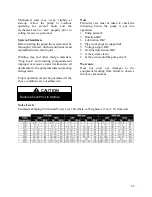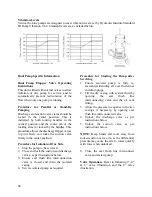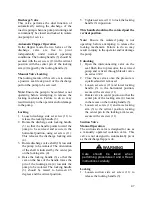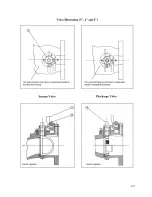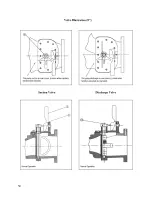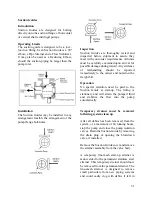
36
3.
Generously soak coils by spraying
CHLOR*RID® directly on and into
the fin pack section. Let stand for 5 to
10 minutes keeping the area wetted.
Do not allow to dry before rinsing.
4.
Using pressurized potable water,
(<100 psi), rinse the CHLOR*RID®
and dissolved chlorides/salts off of
the coils continuing to always work in
sections/panels.
5.
Starting at the top of the coil, begin
rinsing the coil from side to side until
you reach the bottom. Repeat as many
times as is necessary to ensure all coil
sections/panels have been completed
and are thoroughly rinsed.
6.
Reinstall all panels and tops that were
removed.
Microchannel Coil Cleaning
Documented
routine
cleaning
of
microchannel coils with factory provided e-
coating is required to maintain coating
warranty coverage. See E-Coated Coil
Cleaning section.
Air-cooled heat exchangers may include
microchannel coils.
Cleaning microchannel coils is necessary in
all locations. In some locations it may be
necessary to clean the coils more or less often
than recommended. In general, a condenser
coil should be cleaned at a minimum of once
a year. In locations where there is commonly
debris or a condition that causes dirt/grease
build up it may be necessary to clean the coils
more often. Proper procedure should be
followed at every cleaning interval. Using
improper cleaning technique or incorrect
chemicals will result in coil damage, system
performance fall off, and potentially leaks
requiring coil replacement.
Documented
routine
cleaning
of
microchannel coils with factory provided e-
coating is required to maintain coating
warranty coverage. Use the E-Coated Coil
Cleaning section for details on cleaning e-
coated coils.
Field applied coil coatings are not
recommended with microchannel coils.
Allowed Chemical Cleaners and Procedures
AAON recommends certain chemicals that
can be used to remove buildup of grime and
debris on the surface of microchannel coils.
These chemicals have been tested for
performance and safety and are the only
chemicals that AAON will warrant as correct
for cleaning microchannel coils.
There are three procedures that are outlined
below that will clean the coils effectively
without damage to the coils. Use of any other
procedure or chemical may void the warranty
to the unit where the coil is installed.
With
all procedures make sure the unit is off
before starting.
The water pressure used to clean should not
exceed 140 psi, from no closer than 6 inches
from the coils, and with the water aimed
perpendicular to the coils.
Electric shock hazard. Shut off all
electrical power to the unit to avoid
shock hazard or injury from rotating
parts.
WARNING
WARNING
Summary of Contents for LN Series
Page 49: ...49 ...
Page 50: ...50 ...
Page 57: ...57 Pressure Temperature Limits Flo Trex Cross Section ...
Page 62: ......

